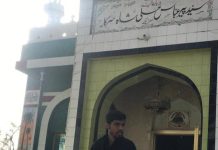Islamabad: A recent survey of National AIDS Control Programme (NACP) reveals that some of the key population pockets in Pakistan are prone to HIV epidemic. Low level of awareness regarding contracting HIV and its preventions remain main challenges in curtailing the epidemic.
Based on the findings of a 2nd Generation HIV Surveillance, “Integrated Biological & Behavioral Surveillance (IBBS) in Pakistan 2016-17” (exclusively available on Truth Tracker) it has been recommended to scale-up medical services in the populous areas of Pakistan.
The most recent national surveillance data was collected in 2011 the rapid rate at which the epidemic is escalating updated information is imperative for devising effective strategy to prevent HIV, which signifies the need to conduct 5th surveillance round. To address the need for sufficient data UNAIDS & Global Fund planned a National scale study in 23 cities/towns to determine the prevalence and behaviors among vulnerable populations.
The report provides biological and behavioural information related to contacting HIV among four key populations: People Who inject Drugs (PWID), Men Who Have Sex with Men (MSM), Transgender populations and Female Sex Workers (FSWs). Data was collected in 23 sites – 13 in Punjab, 6 in Sindh and 2 in Baluchistan and Khyber Paktunkhawah, each.
The survey, for the first time including Male Sex Workers (MSWs), finds Men having Sex with Men (non sex workers men with gay tendencies) have risen up to 776,873 with estimated 3.4 percent prevalence of HIV Aids. While the estimated number of Male Sex Workers (MSWs) is 55,340 with 5.6 percent HIV Aids prevalence. The estimated number of female Sex Workers (FSWs) is 173,447 with 2.2 percent prevalence of HIV AIDS. The estimated figures of this survey find out as many as 113,422 PWIDs in Pakistan with 38 percent affected by HIV AIDS. Moreover, the number of HIV AIDS in Transgender (TG) was highest with 7.1 percent affected by HIV AIDS with an estimated population of 52,425.
This survey has been conducted after six years. Head of NACP, Dr. Abdul Baseer Khan Achakzai told truth tracker that as of March 2017, an estimated number of HIV AIDS patients recorded in Pakistan is 133,299 out of them only 18,868 have registered themselves for treatment and counseling.
The NACP survey finds HIV AIDS is spreading in urban populations, mostly. With an estimated prevalence rate of less than 0.1 percent, Pakistan continues to have a low-level HIV epidemic among general population. However, serial surveillance results indicate that concentrated epidemics have already been established among key populations. As in several other regions, the HIV epidemic in Pakistan is characterized by high initial prevalence among injecting drug users (PWID), which has already expanded to Transgender /Transgender Sex Workers (TGs) with a potential to expand into female sex workers (FSWs) and gay couples.
Although the estimated HIV burden of 0.1% appears low and relatively stable, it masks the overall progress of HIV epidemic in Pakistan and does not elucidate the deadly trajectory of the epidemic, he said. Underneath a fairly steady and static HIV prevalence among general population, there is a proliferating epidemic which is continuously at a rise among key populations, which form the main agents in transmission and fueling of the epidemic in the country, he quoted the survey. There are no signs of the HIV epidemic reversing, declining, or even stabilizing among key populations, the survey indicates.
The study suggests “rights-based, evidence-informed, and community-owned programs that use a mix of biomedical, behavioral, and structural interventions, prioritized to meet the current HIV prevention needs of particular individuals and communities, so as to have the greatest sustained impact on reducing new infections.” It further emphasizes Pakistan’s needs to work on a robust monitoring and evaluation system at national, sub-national and program level. Program monitoring data can provide detailed information about the quality and intensity of interventions; including the proportion of those reached that utilize various program services. A significant number of countries have incorporated data from program monitoring efforts to provide information about progress and achievements, using unique identifiers to individually track service provision to key populations. A similar kind of effort can be initiated in Pakistan, coordinated by the NACP.
“We know with increasing certainty what disaster awaits if the response to AIDS continues to be inadequate. We also know how to strengthen that response in ways that will save millions of lives and billions of dollars. This plan is achievable, but only with strong leadership at every level of society.” the study concludes.



